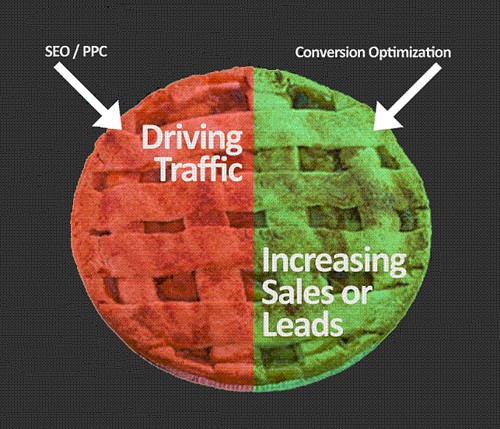If you’re a business owner with a website, you know how important SEO is for getting seen online. With an effective SEO strategy, people can find you when they search online for things related to your business. Did you know that over 60% of B2B buyers start their research with an online search? That’s why having a strong SEO strategy is so important.
One big issue with SEO is that it’s different from other types of advertising. The people who do the advertising (marketers) and the place where they advertise (search engines) don’t always agree. Search engines can change their rules anytime without warning. In the past, SEO mainly involved using tricks to get high rankings. But now, those tricks don’t work and can even get your website in trouble.
Today’s SEO needs a different approach. It’s about using a mix of tactics to optimize your site, creating good content, and using social media. The good thing is, these new SEO techniques can be fun to use! They make sense and are interesting for both the people doing the advertising and the people seeing the ads.
To get better results from search engines, you need to have an effective SEO strategy. This means using new techniques to improve your site’s visibility in online searches.
Here are some tips on how you can build an effective SEO strategy:
1. Understand the search intent of your target market
To make sure your content is effective, you need to know what people are looking for when they search online using the keywords you’re targeting. For example, if someone searches for “running shoes,” are they looking for info about what makes running shoes different, tips on choosing them, or where to buy them? Knowing this helps you create the right content.
Understanding what your target audience wants when they search online might seem hard, but Google is interested in figuring it out too. One way to understand user intent is by looking at Google’s search results. The types of results you see give clues about what people want when they search using certain keywords.
Let’s say you search for “running shoes” and see mostly retail pages on the first page of results. This suggests that most people searching for this keyword want to buy running shoes. So, if you want to rank for this keyword, you should optimize your website’s retail pages.
Besides looking at Google results, consider any market data you have and your industry knowledge. These can also give you insights into what people are looking for when they search online.
2. Build a content framework
Analyzing search results doesn’t just help you understand user intent; it can also help you build a framework for excellent content strategy. Here are a few tips on building your content framework:
Create Keyword Groups – By now you should already know that content creation needs to start with keyword research. Now, let’s say your research has resulted in you having a list of hundreds of keywords. It can be easy to get overwhelmed and have a bit of a problem choosing which keywords to target first when you create a content calendar. A quick solution would be to group similar keywords or those that lead to similar results.
Do the Google Research – Choose a few words from each of your keyword groups and then do the Google research mentioned earlier (for identifying user intent). The result of this research will give you an idea as to what the general user intent is for each group.
Prioritize – The next step is to prioritize your keywords according to user intent. Note that there will likely be more than one user intent per keyword group. If there is a user intent that is dominant in the group, you’d do well to create content for that keyword first. You now have a better-structured framework for your content.
When creating content, bear in mind that it is no longer advisable for you to create content about your identified keywords. Rather, you need to create content that discusses topics related to your keywords. Google and other search engines have learned in recent years that articles about keywords don’t really impress users in the same way articles about topics do. So find topics that are closely related to your keywords and then create high-quality content covering those topics. And when you do, make sure your keywords are used sparingly because Google no longer appreciates keyword stuffing.
3. Attract a wide range of new visitors
One big challenge for business owners is getting lots of website visitors from SEO efforts but not turning many of them into customers. This means not getting a good return on their SEO investment. The problem might be that while they’re getting organic traffic, they’re not doing much to turn those visitors into customers.
When someone finds your site after a Google search, they might not buy anything right away. They might not even know about your brand before. And if they don’t like what they see on your site, they can easily go back to Google and find other options.
So, it’s important to make sure your website has all the info your customers need. This means creating content based on what people are looking for. You also need to make sure your website is easy to use and focused on helping visitors, not just selling to them. When you focus on helping your customers first, sales will follow.
It’s not just about getting new customers; it’s also about getting them to come back. So, make it easy for people to follow you on social media and keep them engaged with your brand. Being active on social media helps boost your brand’s visibility and lets you connect with more customers. Plus, it can help you get more links to your site, which tells search engines your brand is important and should be shown to more people.

One of the most common mistakes business owners make is that of working hard to gain more traffic, but not doing enough to convert that traffic into sales.
Steps to Ensure Your Website Functions Smoothly on Mobile for an Effective SEO Strategy
Making sure your website works well on mobile phones is vital for attracting visitors and ranking high on search engines with an effective SEO strategy. Here are some simple steps to make sure your site is mobile-friendly.
First, you need to make sure your website loads quickly on mobile devices. Nobody likes waiting for a slow website to load, especially on their phone! You can speed things up by optimizing your images, using a fast web hosting service, and minimizing unnecessary code.
Next, you need to make sure your website looks good on small screens. That means using responsive design, which automatically adjusts your site’s layout to fit different screen sizes. This ensures that your visitors can easily read and navigate your content, no matter what device they’re using.
It’s also important to make sure your buttons and links are easy to tap with a finger. If they’re too small or too close together, visitors might have a hard time clicking on them. Make sure to space things out and use large, easy-to-tap buttons.
Another thing to consider is your website’s content. People on mobile devices are often looking for quick answers or information on the go. So, make sure your content is concise, easy to read, and gets straight to the point. You can also use headings and bullet points to break up long paragraphs and make things easier to digest.
Finally, don’t forget to test your website on different mobile devices and browsers. What looks good on one phone might not look the same on another. By testing your site regularly, you can catch any issues and make sure everything works smoothly for all your visitors.
By following these steps, you can ensure that your website functions smoothly on mobile devices, which will help improve your search engine rankings and attract more visitors to your site.
Conclusion
If your website isn’t following today’s best SEO practices, you won’t see good results. You might not even show up in search results at all! So, if you haven’t started yet, it’s time to make some changes. The tips we talked about here will help you get started.
You might be wondering if code still matters. Well, it does, but not as much as it used to. These days, having good content and making sure your website is easy to use are more important for SEO. If your website isn’t user-friendly, it can actually hurt your chances of showing up in search results.
SEO has changed a lot recently, but it’s mostly been for the better. With the effective SEO strategies we’ve talked about, you’ll be ready to build your brand online, get the most out of your SEO efforts, and grow your business.





